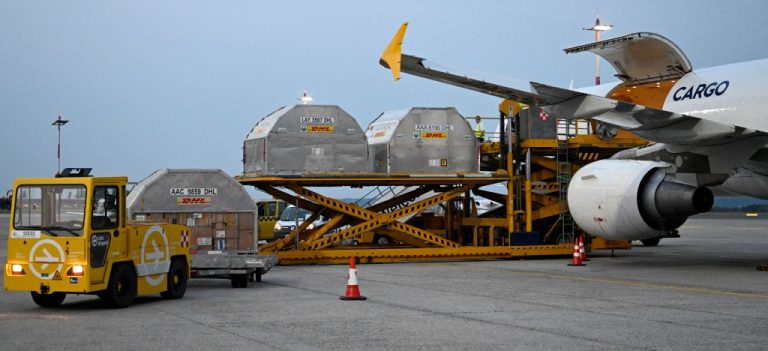São Paulo – Internationalization is a goal for some companies, a consequence for others, and a dream for many. All firms, though, could get there. This requires long-term investments, studying the markets they plan on operating in, gathering a team that specializes in foreign trade, having workers that speak other languages, and most of all, patience, as results only come in the long term.
According to Lívia Barakat, professor at Fundação Dom Cabral (FDC) and researcher at the Strategy and International Business Center, various are the results that a company could obtain by putting itself on the global stage, but these results not always turn into income.
“First of all, it gains by training its staff to operate globally. I’d say talent development is key,” she says. “Second comes risk diversification. [The company] is less vulnerable if it isn’t in just one market. Many companies go international to reduce their reliance on the domestic market. Then come innovation. By going international, it’s forced to develop high-level goods and services to compete globally with the top firms out there,” she says. Other results from these investments are foreign exchange earnings and access to fundings and trainings that are only offered to companies that operate overseas.

The 16th edition of the FDC Journey of Internationalization of Brazilian Companies, a study published by the institution in September, interviewed 237 Brazilian companies that are international or in the process of internationalization. Of these, 50.4% are medium-sized enterprises – which are described by development bank BNDES as having annual turnovers of BRL 4.8 million-BRL 300 million (USD 978,000-USD 61 million) – over half are headquartered in Brazil’s Southeast region, and 40% in the state of São Paulo. The United States was the primary internationalization destination of 16% of them, followed by Argentina, Paraguay, Uruguay, and Portugal.
Of the 237 respondents, 75% started their internationalization processes through exports, followed by commercial subsidiaries at 19.6%, productive subsidiaries at 13.9%, and online presence at 11.7%.
Monica Rodriguez, a trade international consultant at consulting firm BMJ, says that internationalization comprehends various modalities of relationships between a company and the foreign market. They include trade, franchising, direct and indirect investment, manufacturing of goods, and service delivery in other countries. She says that Brazil has a little over 500 internationalized companies and that this is expected to increase despite the global geopolitical challenges.
Barakat says that the internationalization process demands extensive research, and the companies usually start it in countries that are close to Brazil or share some similarities with it. This doesn’t mean that distant destinations can’t be the first global market of a Brazilian company. But it is always necessary to study the market and regulations of the country where they plan on operating and learning the details that surveys sometimes can’t grasp.
Rodriguez, in turn, says that operating in global markets is a challenge for companies. “Going international has its pros and cons that must be assessed by the leaders in order to establish the best plan to mitigate risks,” she says.

The pros of internationalization, Rodriguez says, go beyond reducing the dependence on the domestic market, to include reaching new markets, creating a global brand, diluting risk, modernizing the company, technological updating, reducing the tax burden, foreign exchange investment and earnings, higher brand value, greater competitiveness, raising the bar of management.
The time for the company to obtain the first returns of these investments varies according to the company, the industry, the planning, but according to Barakat, studies indicate that this can take up to five years. “The most successful companies are those that plan ahead of the process and understand that the results will come but sometimes at a slower pace than they would in the domestic market,” says Barakat.
She says that the internationalization process has changed over the years. The firms used to first establish and become leading in companies in the domestic market and only then invest abroad in a process that usually took some 20 years. The average time to go international is now eight years, and companies no longer wait to lead the domestic market before they start going international. She points out that the way they leave Brazil has also changed.
“In recent years, the companies have sought alternative ways to go international. We saw a very large growth of e-commerce, which can be seen as exports, but have a great capillarity because of the online mode, so we’ve seen exporting companies that are supported by marketplaces. Companies operating in apps with multi-site teams without a brick-and-mortar office. They can hire people in other countries who can work remotely. The pandemic has broken these work paradigms,” says Barakat.
Goal: Operating abroad
Vitta Gold Cosmetics started with the purpose of operating outside Brazil. Owners Lucas Mendes and Cecilia Araujo were partners of other companies and decided to establish Vitt Gold with a focus on the foreign market. Therefore, the company processes were developed with an eye on the global stage. Labels, communication, marketing, operational procedures, it was all thought for the foreign market.

This perspective has helped the company cut corners in the internationalization process, but operating overseas still demanded investments, and adaptation and compliance with regulations and certifications and finding skilled labor were the biggest challenges Vitta Gold found in operating overseas.
“A leading investment has been in assembling a high-quality staff. In the commercial department, multilingual workers experienced in complex B2B sales; in marketing, we need an all-around staff that can communicate well to various cultures and contexts; in operations, we require people experience in foreign trade, international registrations, foreign exchange finance etc.,” said Mendes.
The company exports to 73 countries across all continents and has its own operations through offices or on-site stock in the US, Canada, India, European countries, and Dubai, United Arab Emirates. “Internationalization has left us at the forefront of expertise in our industry, as we have daily access to trends in different countries, which gives us a broad view of the market. Our revenue is now almost entirely international, and being in many countries also help us mitigate risks, as crises in some markets can be compensated by upturns in others,” says Mendes.
Translated by Guilherme Miranda




